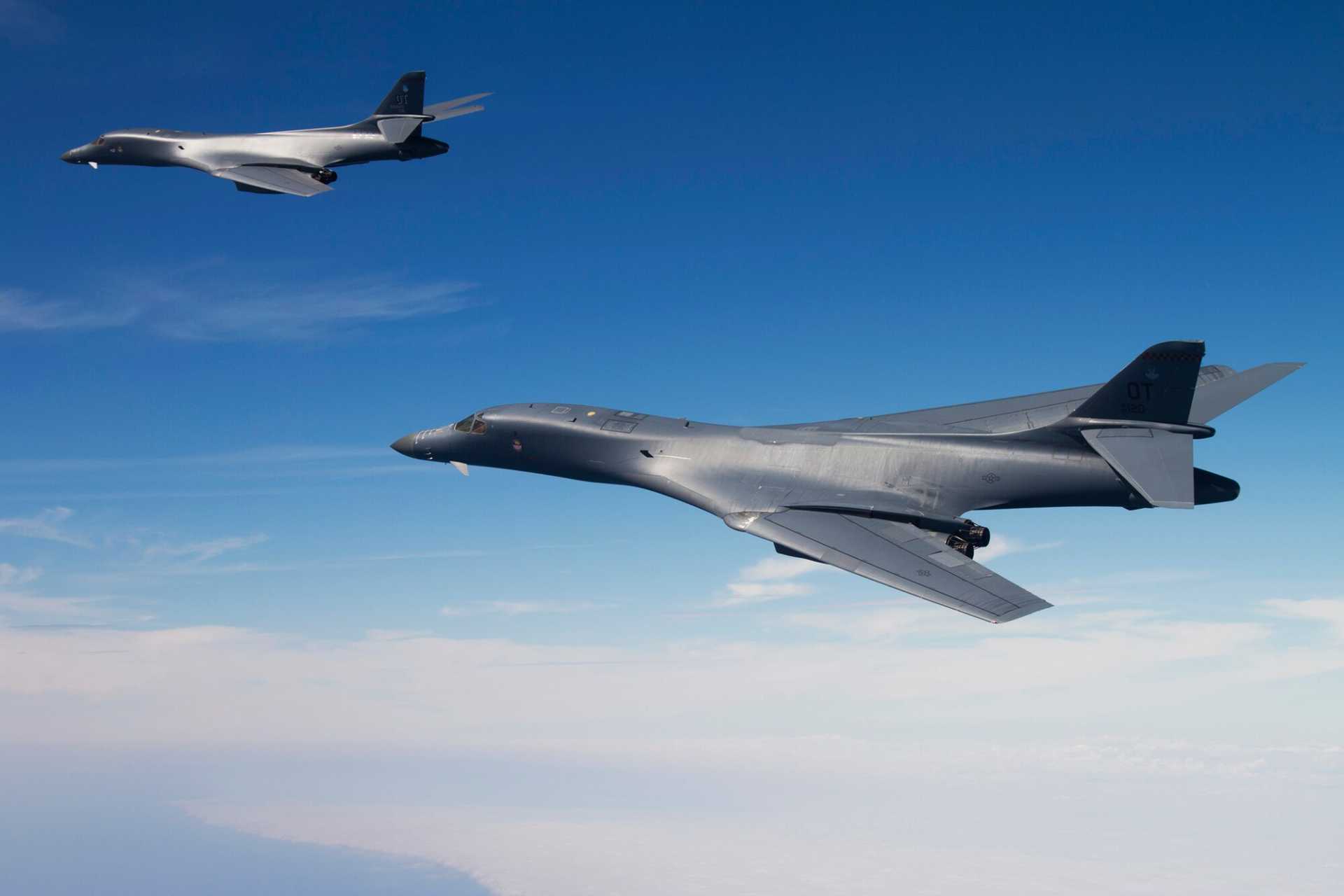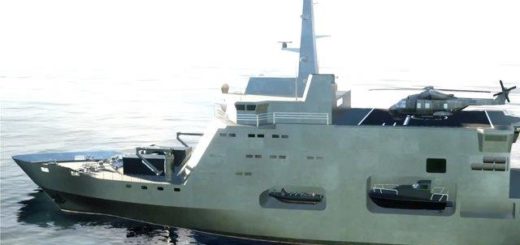Breaking News: U.S. B-1B Bombers Conduct First Operational Mission from Misawa Air Base in Japan

{loadposition bannertop}
{loadposition sidebarpub}
As reported by Indo-Pacific Defense Forum on May 4, 2025, U.S. Air Force B-1B Lancer bombers conducted their first operations from Misawa Air Base in northern Japan. Their arrival in April 2025 was previously reported by Army Recognition, confirming their initial deployment from the base. This milestone marks a significant evolution in the United States’ strategic bomber posture in the Indo-Pacific and highlights a growing emphasis on forward-deployed deterrence. The deployment, part of Bomber Task Force 25-2, reflects Washington’s broader strategy to reinforce stability in a region increasingly shaped by military competition, territorial disputes, and power projection dynamics involving North Korea and China. The decision to position long-range bombers on Japanese soil underscores a clear message: the U.S. is committed to preserving a credible and flexible presence in one of the world’s most strategically contested theaters.Follow Army Recognition on Google News at this link
This deployment is supported by the proven capabilities of the B-1B Lancer, a long-range strategic bomber capable of carrying the largest conventional payload of guided and unguided munitions in the U.S. fleet. (Picture source: Jake Melampy/ Eglin Air Force Base)
The B-1B Lancer, introduced in the 1980s, continues to serve as a core component of the U.S. Air Force’s long-range strike capability. With its variable-sweep wings, supersonic speed, and advanced avionics, the B-1B is designed to perform in diverse operational environments. It can fly low and fast to avoid detection and is equipped with modern electronic warfare systems and precision-guided munitions. This allows it to conduct both targeted strikes and broader area bombardment missions with a high degree of accuracy and lethality. In February 2024, the B-1B was used in combat operations over Iraq and Syria, where it struck multiple targets linked to Iran-backed militias following attacks on U.S. personnel. This recent operational use confirmed the bomber’s enduring relevance in high-tempo conflict scenarios and its capacity to deliver conventional firepower with speed and precision.
Beyond combat roles, the B-1B regularly participates in Bomber Task Force (BTF) deployments, a key component of the U.S. Air Force’s global presence strategy. These rotational missions are designed to test aircrew readiness, provide exposure to varied operational environments, and build stronger interoperability with allied forces. The B-1B’s deployment to Misawa Air Base as part of BTF 25-2 is particularly significant, as it marks the first time the aircraft has been forward-based on Japan’s main island, departing from the traditional model of staging long-range bombers from more distant bases such as Guam or Diego Garcia. Prior to the B-1B, the U.S. had relied on B-52 Stratofortress bombers for temporary rotations out of Kadena Air Base in Okinawa since the 1960s, demonstrating a decades-long commitment to regional airpower presence.
By placing B-1Bs at Misawa, the United States has brought these strategic assets within closer striking distance of potential flashpoints in East Asia. North Korea, just over 800 miles away, is now firmly within the B-1B’s conventional reach, a shift that has not gone unnoticed in Pyongyang. The North Korean regime has denounced the deployment as a “vicious change” and a direct threat to regional peace. The move also introduces new pressure on Chinese military planning, particularly along the First Island Chain—a line of archipelagos that Beijing considers critical to its national defense. By positioning bombers inside this zone, the U.S. complicates Chinese calculations and enhances deterrence by increasing the unpredictability and responsiveness of American airpower.
From a technical perspective, the B-1B offers different strengths compared to the older B-52 Stratofortress. The Lancer is faster, more maneuverable, and designed to evade radar detection thanks to its reduced radar cross-section. It is exclusively armed with conventional munitions, in contrast to the B-52’s dual-role nuclear and conventional capability. Operationally, the B-1B is ideal for penetrating defended airspace and executing precise strikes against time-sensitive or high-value targets. Meanwhile, the B-52 remains valuable for long-range bombardment, maritime surveillance, and launching standoff weapons from outside contested areas. Together, they provide complementary options for U.S. commanders, but the B-1B’s presence in Misawa represents a deliberate emphasis on agile, conventional force projection.
As highlighted by Lt. Col. Christopher Travelstead, operations director for the deployed squadron, the missions flown from Misawa not only demonstrate the U.S. commitment to deterring threats but also ensure that aircrews are trained and ready to respond to any contingency. The forward basing of B-1Bs strengthens the credibility of U.S. deterrence by reducing response time, expanding operational reach, and allowing integration with Japanese forces through joint training. For Tokyo, this deployment reaffirms the strength of the U.S.-Japan alliance, a cornerstone of regional security since the end of World War II. It also signals that Japan remains a central partner in addressing the increasingly complex security environment marked by disputes over maritime sovereignty, freedom of navigation, and the growing military assertiveness of rival powers.
The B-1B Lancer’s deployment to Misawa Air Base is far more than a symbolic maneuver. It marks a clear shift in U.S. bomber basing strategy, enhances the operational tempo and flexibility of American forces in the region, and sends an unmistakable message to adversaries. As geopolitical tensions continue to rise across the Indo-Pacific, this new posture not only reinforces deterrence but also strengthens the architecture of allied cooperation necessary to maintain a free and open region. The B-1B stands not only as a platform of power but as a testament to enduring strategic resolve.

{loadposition bannertop}
{loadposition sidebarpub}
As reported by Indo-Pacific Defense Forum on May 4, 2025, U.S. Air Force B-1B Lancer bombers conducted their first operations from Misawa Air Base in northern Japan. Their arrival in April 2025 was previously reported by Army Recognition, confirming their initial deployment from the base. This milestone marks a significant evolution in the United States’ strategic bomber posture in the Indo-Pacific and highlights a growing emphasis on forward-deployed deterrence. The deployment, part of Bomber Task Force 25-2, reflects Washington’s broader strategy to reinforce stability in a region increasingly shaped by military competition, territorial disputes, and power projection dynamics involving North Korea and China. The decision to position long-range bombers on Japanese soil underscores a clear message: the U.S. is committed to preserving a credible and flexible presence in one of the world’s most strategically contested theaters.
Follow Army Recognition on Google News at this link
This deployment is supported by the proven capabilities of the B-1B Lancer, a long-range strategic bomber capable of carrying the largest conventional payload of guided and unguided munitions in the U.S. fleet. (Picture source: Jake Melampy/ Eglin Air Force Base)
The B-1B Lancer, introduced in the 1980s, continues to serve as a core component of the U.S. Air Force’s long-range strike capability. With its variable-sweep wings, supersonic speed, and advanced avionics, the B-1B is designed to perform in diverse operational environments. It can fly low and fast to avoid detection and is equipped with modern electronic warfare systems and precision-guided munitions. This allows it to conduct both targeted strikes and broader area bombardment missions with a high degree of accuracy and lethality. In February 2024, the B-1B was used in combat operations over Iraq and Syria, where it struck multiple targets linked to Iran-backed militias following attacks on U.S. personnel. This recent operational use confirmed the bomber’s enduring relevance in high-tempo conflict scenarios and its capacity to deliver conventional firepower with speed and precision.
Beyond combat roles, the B-1B regularly participates in Bomber Task Force (BTF) deployments, a key component of the U.S. Air Force’s global presence strategy. These rotational missions are designed to test aircrew readiness, provide exposure to varied operational environments, and build stronger interoperability with allied forces. The B-1B’s deployment to Misawa Air Base as part of BTF 25-2 is particularly significant, as it marks the first time the aircraft has been forward-based on Japan’s main island, departing from the traditional model of staging long-range bombers from more distant bases such as Guam or Diego Garcia. Prior to the B-1B, the U.S. had relied on B-52 Stratofortress bombers for temporary rotations out of Kadena Air Base in Okinawa since the 1960s, demonstrating a decades-long commitment to regional airpower presence.
By placing B-1Bs at Misawa, the United States has brought these strategic assets within closer striking distance of potential flashpoints in East Asia. North Korea, just over 800 miles away, is now firmly within the B-1B’s conventional reach, a shift that has not gone unnoticed in Pyongyang. The North Korean regime has denounced the deployment as a “vicious change” and a direct threat to regional peace. The move also introduces new pressure on Chinese military planning, particularly along the First Island Chain—a line of archipelagos that Beijing considers critical to its national defense. By positioning bombers inside this zone, the U.S. complicates Chinese calculations and enhances deterrence by increasing the unpredictability and responsiveness of American airpower.
From a technical perspective, the B-1B offers different strengths compared to the older B-52 Stratofortress. The Lancer is faster, more maneuverable, and designed to evade radar detection thanks to its reduced radar cross-section. It is exclusively armed with conventional munitions, in contrast to the B-52’s dual-role nuclear and conventional capability. Operationally, the B-1B is ideal for penetrating defended airspace and executing precise strikes against time-sensitive or high-value targets. Meanwhile, the B-52 remains valuable for long-range bombardment, maritime surveillance, and launching standoff weapons from outside contested areas. Together, they provide complementary options for U.S. commanders, but the B-1B’s presence in Misawa represents a deliberate emphasis on agile, conventional force projection.
As highlighted by Lt. Col. Christopher Travelstead, operations director for the deployed squadron, the missions flown from Misawa not only demonstrate the U.S. commitment to deterring threats but also ensure that aircrews are trained and ready to respond to any contingency. The forward basing of B-1Bs strengthens the credibility of U.S. deterrence by reducing response time, expanding operational reach, and allowing integration with Japanese forces through joint training. For Tokyo, this deployment reaffirms the strength of the U.S.-Japan alliance, a cornerstone of regional security since the end of World War II. It also signals that Japan remains a central partner in addressing the increasingly complex security environment marked by disputes over maritime sovereignty, freedom of navigation, and the growing military assertiveness of rival powers.
The B-1B Lancer’s deployment to Misawa Air Base is far more than a symbolic maneuver. It marks a clear shift in U.S. bomber basing strategy, enhances the operational tempo and flexibility of American forces in the region, and sends an unmistakable message to adversaries. As geopolitical tensions continue to rise across the Indo-Pacific, this new posture not only reinforces deterrence but also strengthens the architecture of allied cooperation necessary to maintain a free and open region. The B-1B stands not only as a platform of power but as a testament to enduring strategic resolve.






